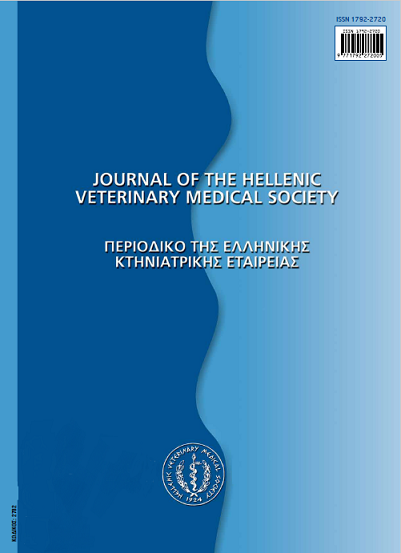Ηπατίτιδα E

Περίληψη
Ο ιός της ηπατίτιδας Ε προκαλεί μεγάλες επιδημίεςκαι σποραδικά κρούσματα στη νότιο και κεντρική Ασία, τη ΜέσηΑνατολή, σε χώρες της Αφρικής και στο Μεξικό. Η μόλυνση μετον ιό της ηπατίτιδας Ε γίνεται μέσω της κοπρανο-στοματικής οδούκυρίως με μολυσμένο νερό. Κλινικά η νόσος είναι ανάλογη των άλλωνμορφών οξείας ιογενους ηπατίτιδας και εμφανίζεται μετά απόχρόνο επώασης 1 έως 8 εβδομάδων. Τα ποσοστά κλινικών κρουσμάτωνείναι υψηλότερα στους νέους ενηλίκους. Σε μικρότερες ηλικίεςη λοίμωξη είναι τις περισσότερες φορές ανικτερική και ασυμπτωματική. Δεν έχει παρατηρηθεί χρονιότητα. Αν και η θνησιμότηταείναι συνήθως χαμηλή (0.07% έως 0.6%), η νόσος κατά τηδιάρκεια της εγκυμοσύνης είναι ιδιαίτερα σοβαρή με ποσοστά θνησιμότηταςπου φτάνουν μέχρι και το 25%. Μέχρι σήμερα δεν υπάρχειδυνατότητα προστασίας από μια μόλυνση με τον ιό. Η εξασφάλισηκαθαρού πόσιμου νερού παραμένει η καλύτερη πρόληψη.Ο HEV είναι ένας μικρός ιός, χωρίς περίβλημα, με μια μονή αλυσίδαRNA θετικής κατεύθυνσης μήκους 7,2 Kb περίπου. Στο γονιδίωμα διακρίνονται τρεις ανοιχτές περιοχές ανάγνωσης (ORFs).Έχουν προσδιοριστεί τέσσερις γονότυποι του ίου, με βάση τις συγκρίσειςσχεδόν ολόκληρης της ακολουθίας του γονιδιώματος. Γενικά,διαφορετικοί γονότυποι παρατηρούνται σε διαφορετικές γεωγραφικέςπεριοχές (γονότυπος 1 : νοτιοανατολική και κεντρικήΑσία, γονότυπος 2: Μεξικό, γονότυπος 3: ΗΠΑ-USI,US2, SwUSκαι γονότυπος 4: Κίνα. Ο ιός είχε ταξινομηθεί αρχικά στην οικογένειατων Caliciviridae. Με βάση συγκριτικές αναλύσεις όμως αφαιρέθηκεπρόσφατα από την οικογένεια των Caliciviridae. Στη δυτικήΕυρώπη και τις Ηνωμένες Πολιτείες, οι περιπτώσεις ηπατίτιδαςΕ με κλινικά συμπτώματα είναι σπάνιες και συχνά έχουν συνδεθείμε ταξίδι σε περιοχές ενδημικές για τον ιό. Εντούτοις, νέα στελέχητου ίου της ηπατίτιδας Ε έχουν απομονωθεί στις ΗΠΑ καιστην Ευρώπη από ασθενείς χωρίς ιστορικό ταξιδιού σε ενδημικέςπεριοχές. Ορολογικές μελέτες στις βιομηχανικές χώρες αναφέρουνποσοστά αντισωμάτων έναντι του ίου της τάξης του 1-6%στους αιμοδότες και σε ορισμένες ομάδες πολύ υψηλότερα ποσοστά.Η αιτία αυτών των σχετικά υψηλών ποσοστών αντι-HEV στις
χώρες όπου η ηπατίτιδα Ε είναι σπάνια είναι άγνωστη. Ο Balayanέδειξε πρώτος ότι είναι δυνατόν χοίροι να μολυνθούν πειραματικάμε ανθρώπινο στέλεχος του ίου της ηπατίτιδας Ε. Στη συνέχεια οClayson ανίχνευσε RNA και αντισώματα του ίου σε χοίρους στο Νεπάλ,χωρίς όμως να χαρακτηριστεί ο ιός. Το 1997 απομονώθηκεστις ΗΠΑ στέλεχος του ίου σε χοίρους. Πρόσφατες μελέτες έδειξανότι χοίροι είναι μολυσμένοι με τον ιό και σε άλλες χώρες, όπωςη Αυστραλία, η Ταϊβάν, το Βιετνάμ, ο Καναδάς, η Ισπανία, η Ελλάδα. To στέλεχος SwUS, xo οποίο απομονώθηκε από χοίρο στιςΗΠΑ διαπιστώθηκε όχι παρουσιάζει μεγάλη ομοιότητα με δυο ανθρώπιναστελέχη του ίου USI και US2 που ανακαλύφθηκαν στιςΗΠΑ. Επίσης στελέχη του ίου που ανακαλύφθηκαν σε χοίρουςστην Ταϊβάν παρουσιάζουν μεγάλη ομοιότητα με τα ανθρώπινα στελέχητου ίου στην ίδια περιοχή. Η μετάδοση του ίου μέσω διασταυρουμένωναντιδράσεων μεταξύ των ειδών έχει αποδειχθεί πειραματικά.Χοίροι μόλυναν πιθήκους και ένα ανθρώπινο στέλεχος μόλυνεχοίρους. Επίσης στελέχη χοίρων του ίου είναι δυνατόν να μολύνουνανθρώπους μέσω επαφής. Αυτά τα δεδομένα καθιστούν πιθανήμια μετάδοση του ίου από τους χοίρους στους ανθρώπους. Οιχοίροι θεωρούνται ζώα κατάλληλα για ξενομεταμόσχευση και η μεταμόσχευσηοργάνων είναι δυνατόν να μεταφέρει ιούς χοίρων σεάνθρωπο-λήπτη, κάτι που δημιουργεί περαιτέρω κίνδυνους για μιαξενοζωονόσο.
Λεπτομέρειες άρθρου
- Πώς να δημιουργήσετε Αναφορές
-
SIOCHU (Α. ΣΙΩΧΟΥ) A. (2017). Ηπατίτιδα E. Περιοδικό της Ελληνικής Κτηνιατρικής Εταιρείας, 54(3), 236–241. https://doi.org/10.12681/jhvms.15264
- Τεύχος
- Τόμ. 54 Αρ. 3 (2003)
- Ενότητα
- Review Articles
Οι συγγραφείς των άρθρων που δημοσιεύονται στο περιοδικό διατηρούν τα δικαιώματα πνευματικής ιδιοκτησίας επί των άρθρων τους, δίνοντας στο περιοδικό το δικαίωμα της πρώτης δημοσίευσης.
Άρθρα που δημοσιεύονται στο περιοδικό διατίθενται με άδεια Creative Commons 4.0 Non Commercial και σύμφωνα με την άδεια μπορούν να χρησιμοποιούνται ελεύθερα, με αναφορά στο/στη συγγραφέα και στην πρώτη δημοσίευση για μη κερδοσκοπικούς σκοπούς.
Οι συγγραφείς μπορούν να καταθέσουν το άρθρο σε ιδρυματικό ή άλλο αποθετήριο ή/και να το δημοσιεύσουν σε άλλη έκδοση, με υποχρεωτική την αναφορά πρώτης δημοσίευσης στο J Hellenic Vet Med Soc
Οι συγγραφείς ενθαρρύνονται να καταθέσουν σε αποθετήριο ή να δημοσιεύσουν την εργασία τους στο διαδίκτυο πριν ή κατά τη διαδικασία υποβολής και αξιολόγησής της.


